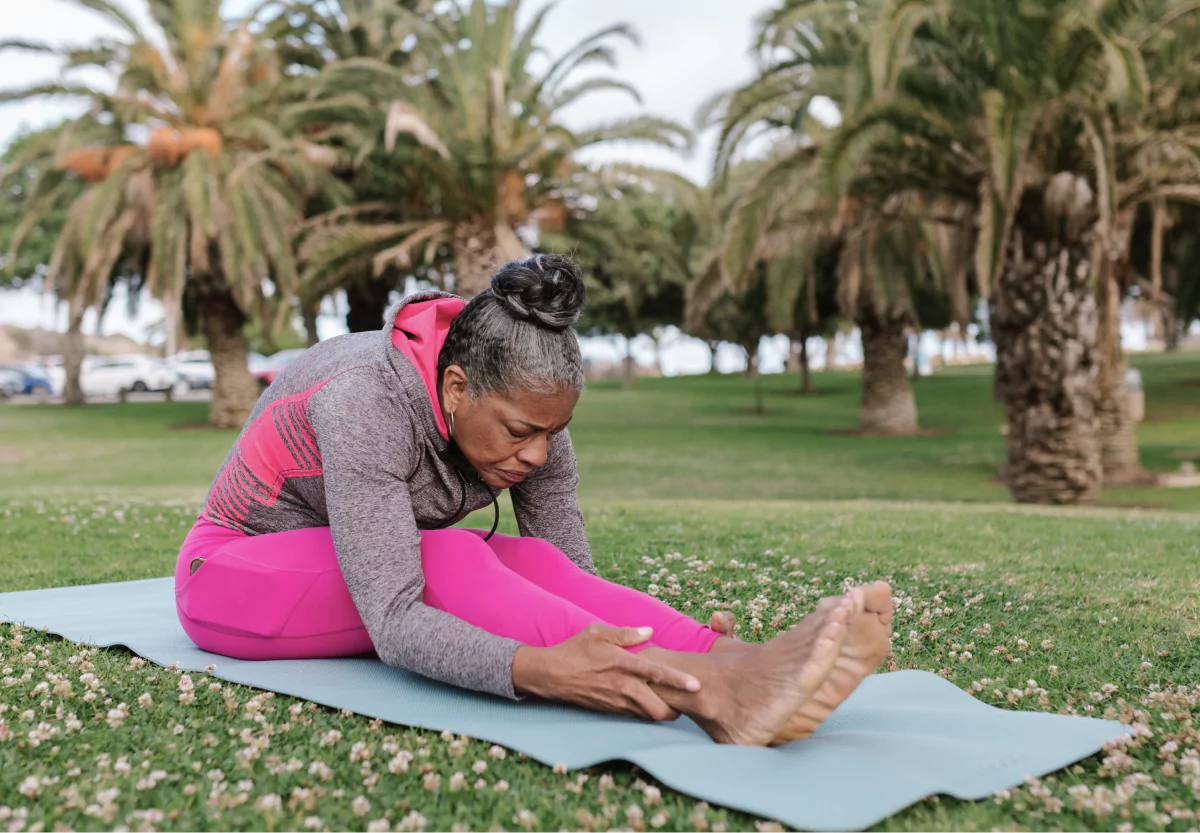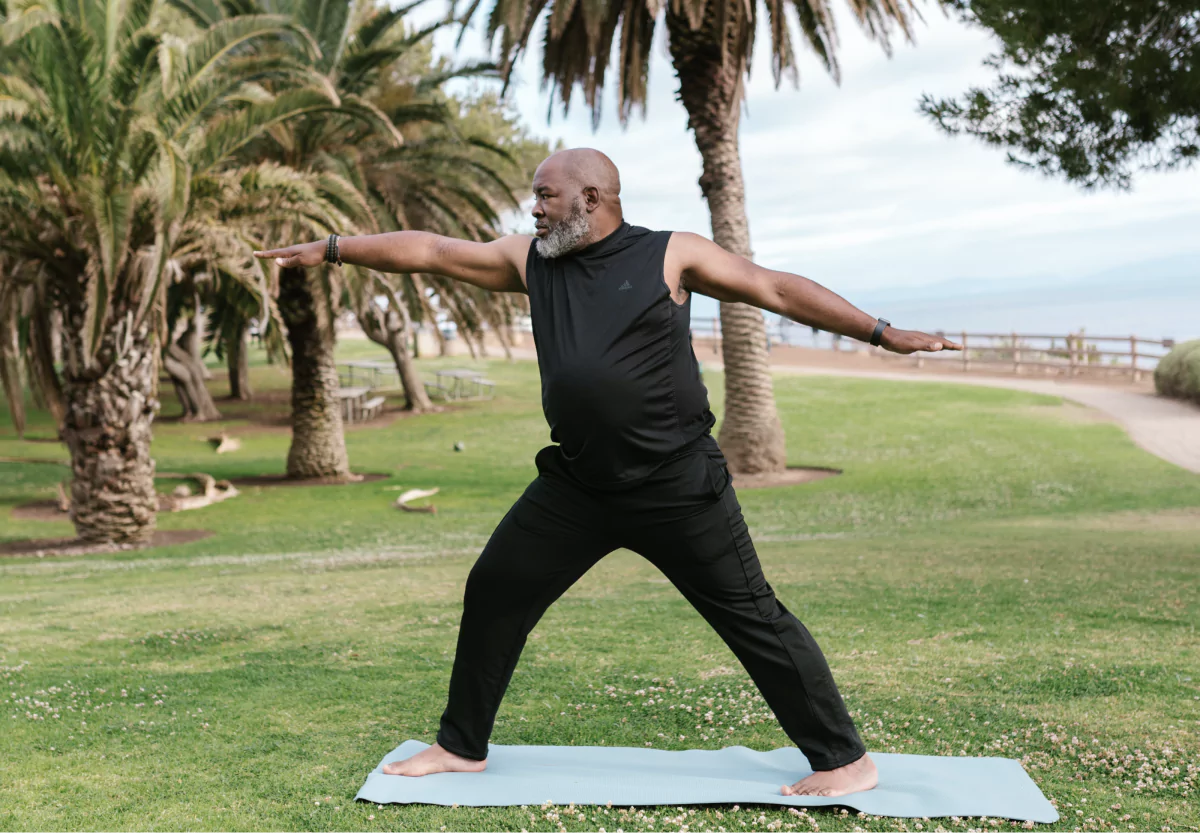Is Pilates Good for Weight Loss?
.webp)
Key Takeways
When it comes to big-name exercise trends, pilates is one that’s been around for quite some time now. In fact—pilates made its debut in the United States just over 100 years ago in 1923.
So what can pilates do for you, and what’s so special about this form of exercise? Can doing a few weekly pilates classes really help with weight loss?
Let’s take a deeper look at the health benefits of pilates and why it's become such a popular way to train.
What is Pilates?

Generally speaking, pilates is a functional training program focused on controlled motions and efficient engagement of numerous muscles at a time. First developed as a low-impact rehabilitation tool for non-ambulatory soldiers, pilates quickly gained popularity as a strength training program for people along a whole spectrum of mobility and fitness levels.
Pilates workouts can be performed on a mat, using bodyweight for resistance, or on a device called a “reformer,” where a sliding platform and a system of pulleys and springs provide the resistance. Part of its appeal is its adaptability to different intensity levels.
In either form, the goal is to strengthen the core muscles and improve balance by repeatedly performing simple exercises. Its emphasis on mind-body symbiosis and careful breathing has garnered comparisons to yoga.
Before we get into the specific health and wellness benefits of pilates, including its potential to help with weight loss, let’s take a closer look at some of the different ways pilates is practiced.
Common Types of Pilates

Like many broad practices of the sort, pilates has a number of different “schools” or approaches, all based on certain aspects of the original program. Many of these programs are led by a pilates instructor, whether in-person or via video, entailing a certain learning curve in order to be performed safely and correctly.
Here are some of the different ways you can practice pilates:
Mat Pilates
Mat pilates is, quite like it sounds, pilates that’s performed on a mat. The emphasis in mat-based pilates is on the body itself as the tool for achieving fitness.
Many of the mat-based pilates exercises are performed in the supine position, with one’s back on the ground, or on one’s side or stomach. The actual movements involved in each exercise are relatively small—it’s all about tight, controlled motions.
Classical Pilates
Classical pilates is very much focused on the original methods put forth by the founder and namesake of pilates, Joseph Pilates. This method seeks to recreate, as accurately as possible, the original form of the pilates exercise.
Stott Pilates

Stott pilates is a more recent interpretation of the original pilates method. It contains both mat and reformer exercises, and seems to promote a balance of both for a maximized routine. Stott pilates is specifically focused on maintaining and restoring the spine’s natural curvature.
Reformer Pilates
Reformer pilates refers less to a specific program of pilates, as to the parts of the original routine that require the use of a “reformer,” a specialized piece of equipment involving a sliding platform, springs, and a system of pulleys.
Because of this, reformer classes are most often found in appropriately-equipped studios, where lessons are usually led by trained instructors.
Winsor Pilates
Winsor pilates, created by Hollywood trainer Mari Winsor, is a pilates program that’s primarily taught over instructional tapes. Winsor pilates is a paid program of exercises that’s closer to mat pilates than to reformer, though often with the additional inclusion of exercise balls, resistance bands, and light weights.
5 Health Benefits of Pilates

While pilates has been around for over a century, the actual research into its effectiveness is surprisingly scant. While doing pilates has not been proven to be more effective than other common exercise programs, there is a good deal of evidence to suggest that pilates is, in itself, a useful and effective training regimen.
1) Boosts Core Strength
Core strength is a centerpiece of any pilates-based training program. Much of the work in pilates is focused around enhancing bodily control and stability, and appropriately so, pilates treats the abdominal “core” as a focal point for training.
Research suggests that the core-training methods used in pilates may indeed be both valid and effective when it comes to building core strength and better posture. However, when it comes to building muscular strength in general, pilates may not be any more effective than other common methods of strength training.
2) Increases Flexibility

Flexibility is important—it’s one of those things that can influence performance in a whole range of other areas. According to research, as a type of full-body workout, pilates may be quite effective when it comes to increasing flexibility.
From hamstring flexibility to sit-and-reach performance, significant improvement was observed in study participants who engaged in regular pilates training.
3) Enhances Body Awareness
When considering the effectiveness of pilates on bodily awareness, it is useful to recall that pilates, like yoga, approaches physicality from a holistic point of view—that is, it seeks to engage the body and the mind in a cooperative effort.
It encourages deliberate breathing and focused, conscious control over posture and bodily orientation. According to research, pilates may indeed lead to improvements in both bodily and spatial awareness. In turn, that increased awareness may also contribute to better balance and a decreased risk of falling.
4) Improves Balance
Balance is a crucial component of nearly any physical activity. Given its emphasis on stabilization and bodily control, pilates may help to improve static balance, lumbo-pelvic stability, and even reduce fall risk among older individuals.
5) May Help Reduce Stress

Chronic stress can lead to a number of well-established adverse effects on bodily health. Thankfully, though, research is increasingly showing a strong connection between appropriate amounts of physical activity and reductions in levels of stress and anxiety.
Likewise, pilates shows significant promise as a tool with the potential to help alleviate stress, as well as certain other psychological symptoms. While this may not be specific to pilates, it is still a powerful benefit, and another reason why pilates may be a great choice for a low-impact workout.
Pilates and Weight Management: How is it Connected?
Now, onto the big question: is pilates good for weight loss? Well, beyond the health benefits already discussed, it turns out that pilates may also be an excellent way to lose weight.
According to research, a regular pilates routine was associated with a significant decrease in body weight, BMI, and body fat percentage.This form of exercise also may have potential for improving physical health and bodily function in a number of other ways.
Pilates can be a great addition to your workout routine, as you can target various muscle groups and get your heart rate up during your training. As such, pilates may be an effective method for weight loss and maintenance of a healthy body weight, as it may support increased calorie burn and muscle growth if practiced regularly and paired with a healthy, balanced diet.
How Often Should You Do Pilates?

While some people use pilates as their main form of full-body exercise, it can also serve nicely as a supplement to an existing routine. As little as one session per week can have beneficial results!
Depending on how central a role you wish for pilates to play in your exercise routine, anywhere from one to five times weekly should do the trick. You can also pair your weekly pilates class with resistance training sessions to build muscle and improve body composition and help you get closer to reaching your weight loss goals.
Pair Pilates with a Healthy Diet to Support a Healthy Weight
Of course, exercise without the proper diet would be would be incomplete. Be sure to give your body what it needs to stay healthy and keep up with your training routine. With all the health benefits pilates may offer, there’s only so far you can go without a balanced nutritional intake!
Find the right Nutrisense programto turn insight into progress.
Go Beyond Glucose Data with Nutrisense
Your glucose can significantly impact how your body feels and functions. That’s why stable levels are an important factor in supporting overall wellbeing. But viewing glucose isn't enough. Nutrisense, you’ll be able to learn how to use your body's data to make informed lifestyle choices that support healthy living.
One-to-one coaching
Sign up to access insurance-covered video calls to work with a glucose expert: a personal registered dietitian or certified nutritionist who will help tailor your lifestyle and diet to your goals.
Monitor and measure what matters
With the Nutrisense CGM Program, you can monitor your glucose with health tech like glucose biosensors and continuous glucose monitor (CGM)s, and analyze the trends over time with the Nutrisense App. This will help you make the most informed choices about the foods you consume and their impact on your health.
Find your best fit
Ready to take the first step? Start with our quiz to find the right Nutrisense program to help you take control.

Heather is a Registered and Licensed Dietitian Nutritionist (RDN, LDN), subject matter expert, and technical writer, with a master's degree in nutrition science from Bastyr University. She has a specialty in neuroendocrinology and has been working in the field of nutrition—including nutrition research, education, medical writing, and clinical integrative and functional nutrition—for over 15 years.




